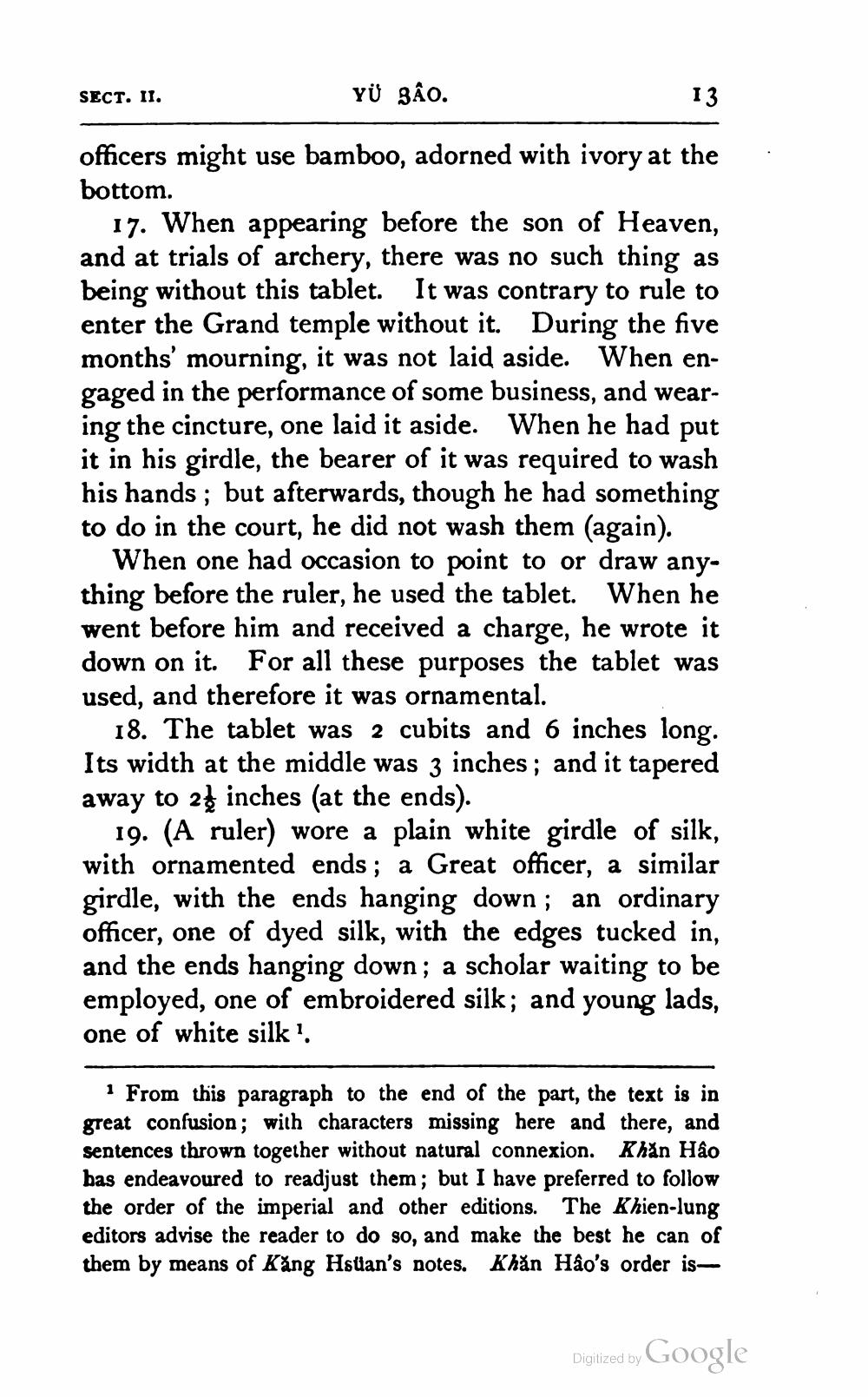________________
SECT. II.
Yü gÃO.
13
officers might use bamboo, adorned with ivory at the bottom
17. When appearing before the son of Heaven, and at trials of archery, there was no such thing as being without this tablet. It was contrary to rule to enter the Grand temple without it. During the five months' mourning, it was not laid aside. When engaged in the performance of some business, and wearing the cincture, one laid it aside. When he had put it in his girdle, the bearer of it was required to wash his hands; but afterwards, though he had something to do in the court, he did not wash them (again).
When one had occasion to point to or draw anything before the ruler, he used the tablet. When he went before him and received a charge, he wrote it down on it. For all these purposes the tablet was used, and therefore it was ornamental.
18. The tablet was 2 cubits and 6 inches long. Its width at the middle was 3 inches; and it tapered away to 24 inches (at the ends).
19. (A ruler) wore a plain white girdle of silk, with ornamented ends; a Great officer, a similar girdle, with the ends hanging down ; an ordinary officer, one of dyed silk, with the edges tucked in, and the ends hanging down; a scholar waiting to be employed, one of embroidered silk; and young lads, one of white silk ?.
1 From this paragraph to the end of the part, the text is in great confusion; with characters missing here and there, and sentences thrown together without natural connexion. Khăn Hảo has endeavoured to readjust them; but I have preferred to follow the order of the imperial and other editions. The Khien-lung editors advise the reader to do so, and make the best he can of them by means of Kång Hsuan's notes. Khăn Hâo's order is
Digitized by Google




